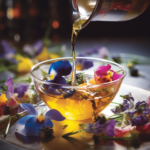Flowers have long been cherished for their ephemeral beauty and vibrant colors, evoking emotions and memories with their delicate forms and fragrances. Preserving flowers through drying and pressing techniques allows us to capture and maintain their beauty long after they have been picked, transforming fleeting blooms into lasting keepsakes. Whether you want to create art, decorate your home, or keep a sentimental bouquet, understanding the methods of drying and pressing flowers is essential.
The Art of Drying Flowers
Drying flowers is one of the oldest methods of preservation, allowing flowers to retain their natural colors and forms. Here are some popular techniques:
1. Air Drying
Air drying is the simplest and most traditional method. It works best for flowers with sturdy stems and low moisture content, such as roses, lavender, and statice.
Steps:
- Harvesting: Cut the flowers when they are fresh and at their peak, leaving some stem attached.
- Preparation: Remove any excess foliage from the stems.
- Hanging: Bundle the flowers in small groups and tie them together with a string. Hang them upside down in a dry, dark, and well-ventilated area. Darkness helps preserve the color of the flowers.
- Waiting: Allow the flowers to dry completely, which typically takes two to three weeks.
2. Silica Gel Drying
Silica gel drying is ideal for flowers with delicate petals, such as daisies, tulips, and zinnias, as it helps maintain their shape and color.
Steps:
- Harvesting: Cut the flowers at their peak and remove excess foliage.
- Preparation: Fill an airtight container with a layer of silica gel crystals.
- Embedding: Place the flowers in the container, ensuring they are surrounded and covered by silica gel.
- Sealing: Seal the container and let it sit for several days to a week, depending on the size and moisture content of the flowers.
- Removing: Gently remove the flowers from the silica gel and brush off any remaining crystals.
3. Microwave Drying
Microwave drying is a faster method that uses a microwave and a desiccant like silica gel to preserve flowers quickly.
Steps:
- Harvesting: Cut the flowers and prepare them as in the previous methods.
- Preparation: Place the flowers in a microwave-safe container and cover them with silica gel.
- Microwaving: Microwave on a low to medium setting in 30-second intervals. Check the flowers frequently until they are dry, usually taking about 2-3 minutes.
- Cooling: Let the container cool before removing the flowers and brushing off the silica gel.
Pressing Flowers
Pressing flowers is a popular technique for preserving their flat form, ideal for making artwork, bookmarks, and decorations.
1. Traditional Pressing
Traditional pressing uses a flower press or heavy books to flatten and dry flowers over time.
Steps:
- Harvesting: Pick fresh flowers, avoiding overly thick or bulky blooms.
- Preparation: Place the flowers between sheets of absorbent paper, such as parchment or blotting paper.
- Pressing: Place the paper with the flowers inside a flower press or between the pages of heavy books.
- Waiting: Leave the flowers to press and dry for two to four weeks. Change the paper if it becomes damp.
2. Microwave Pressing
Microwave pressing offers a quicker alternative to traditional pressing using a microwave flower press or homemade press.
Steps:
- Harvesting: Select and prepare the flowers as in traditional pressing.
- Preparation: Place the flowers between absorbent paper inside the microwave flower press or between two ceramic tiles secured with rubber bands.
- Microwaving: Microwave on a low setting in 15-30 second intervals, checking the flowers until they are dry and flat. This usually takes 1-3 minutes.
- Cooling: Allow the press to cool before opening and removing the flowers.
Tips for Successful Flower Preservation
- Timing: Pick flowers in the morning after the dew has dried but before the heat of the day.
- Condition: Choose flowers that are at their peak, avoiding those that are wilting or damaged.
- Preparation: Remove any dirt or insects from the flowers before drying or pressing.
- Storage: Store dried or pressed flowers in a cool, dry place away from direct sunlight to prevent fading and deterioration.
- Creativity: Experiment with different types of flowers and foliage to create unique compositions and arrangements.
Drying and pressing flowers are timeless techniques that allow us to preserve the beauty and memories associated with blooms. Whether you choose the simplicity of air drying, the precision of silica gel drying, or the speed of microwave methods, each technique offers a way to transform fresh flowers into enduring treasures. Pressing flowers, whether traditionally or with the aid of a microwave, provides a creative outlet for making lasting art. By mastering these methods, you can enjoy the splendor of flowers throughout the year, long after their natural season has passed.


